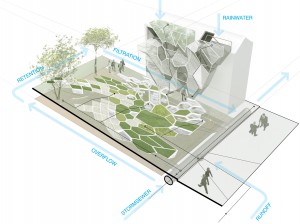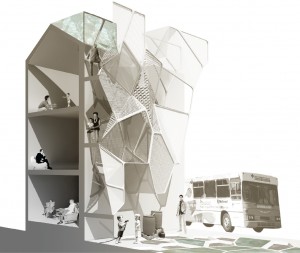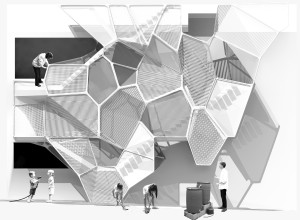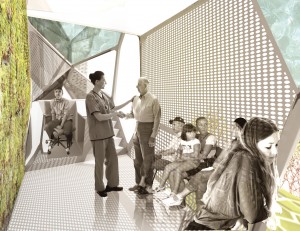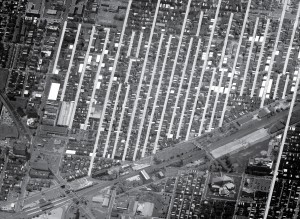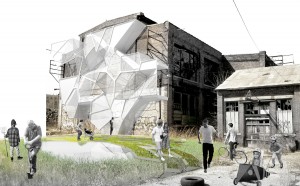Vacuform transforms vacant lots into uniquely productive material and social ecologies.
The project suggest policy alternatives to support ‘soft’ civic infrastructures and the emergent needs of urban communities. Radical reuse on the lots foster a landscape and an architecture of distinct topographies, using material collected from federally mandated civic maintenance and infrastructural improvements to sponsor new forms of civic life. The project benefits from an economy of scale, capitalizing on the resources at play on a neighborhood block and repurposing them for the construction of structures that serve these unique communities.
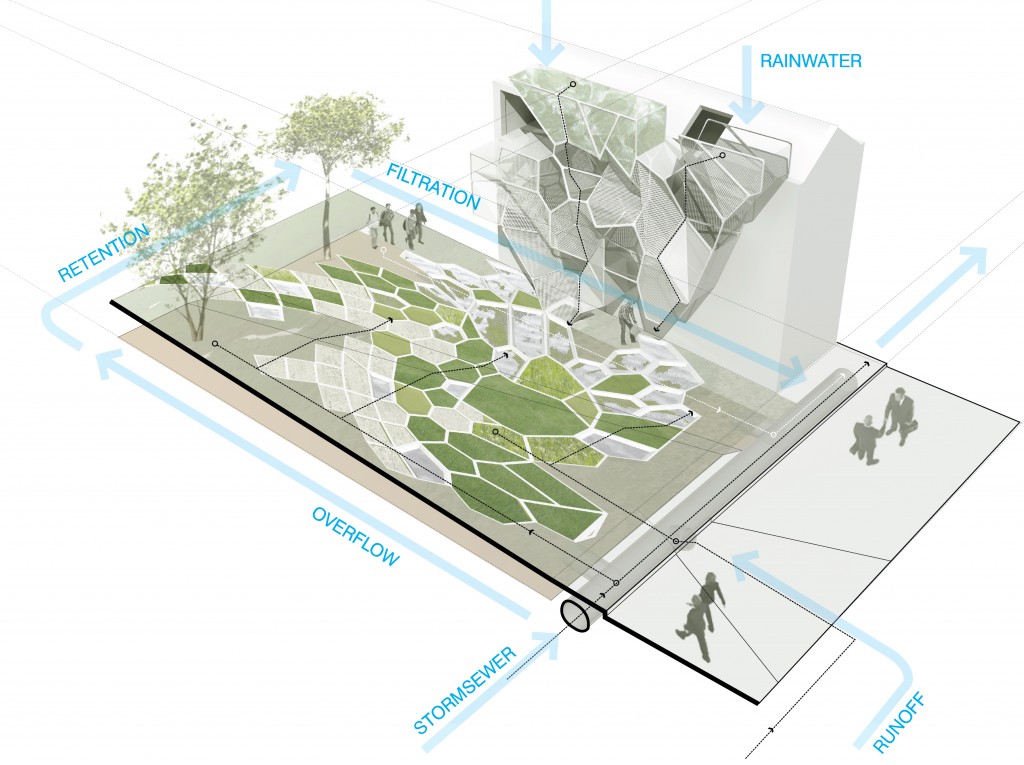
Soft infrastructure
In early phases, the project develops as a soft infrastructure, utilizing newly-collected material from nearby vacant lots to transform the topography of the site into a low-cost, functioning water retention and filtration system, alleviating some of the pressure on the city’s drainage strategies, and fulfilling government mandates to improve water mitigation. Water migrates into the lot from a system of lightweight, networked structural tubing, facilitating capillary action from the saturated ground during water events, and pulling rainwater from neighboring roofs to assist draining. It is retained on site by the project’s landscape, and re-enters the municipal system after events. The project supplements the city’s ‘hard’ infrastructure-its system of tunnels, pipes, and drains-through minimal and strategically placed valves and inlets, until such time as such systems are no longer viable or necessary to service the shrinking city.
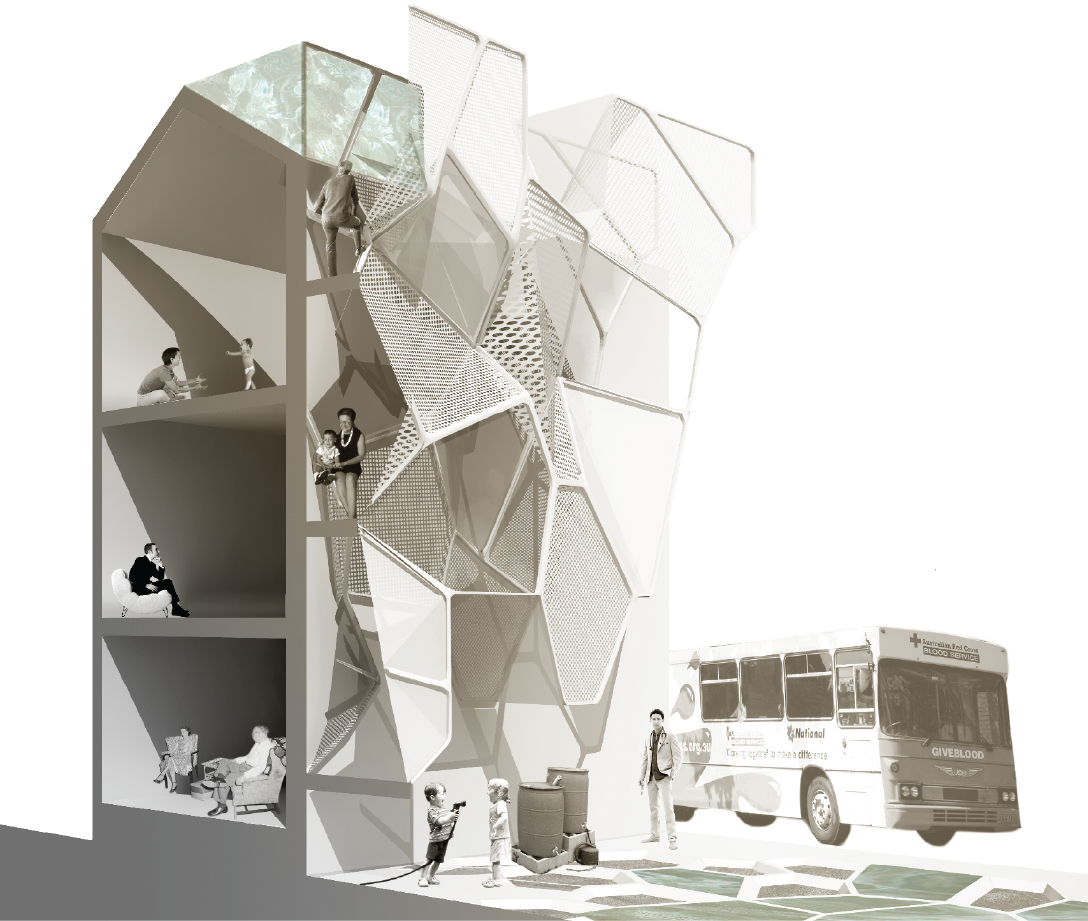
Temporary Spaces
In later phases, additional investment and occupation of the project provides spaces for emergent urban programs, including longterm caregivers, mobile clinics, and traditional needs of communities, like spaces for visiting relatives, entertainment, and home garden, enabling the population to stay longer within the community, live more healthful and productive lives, and contribute to the neighborhood’s evolution and improvement.


